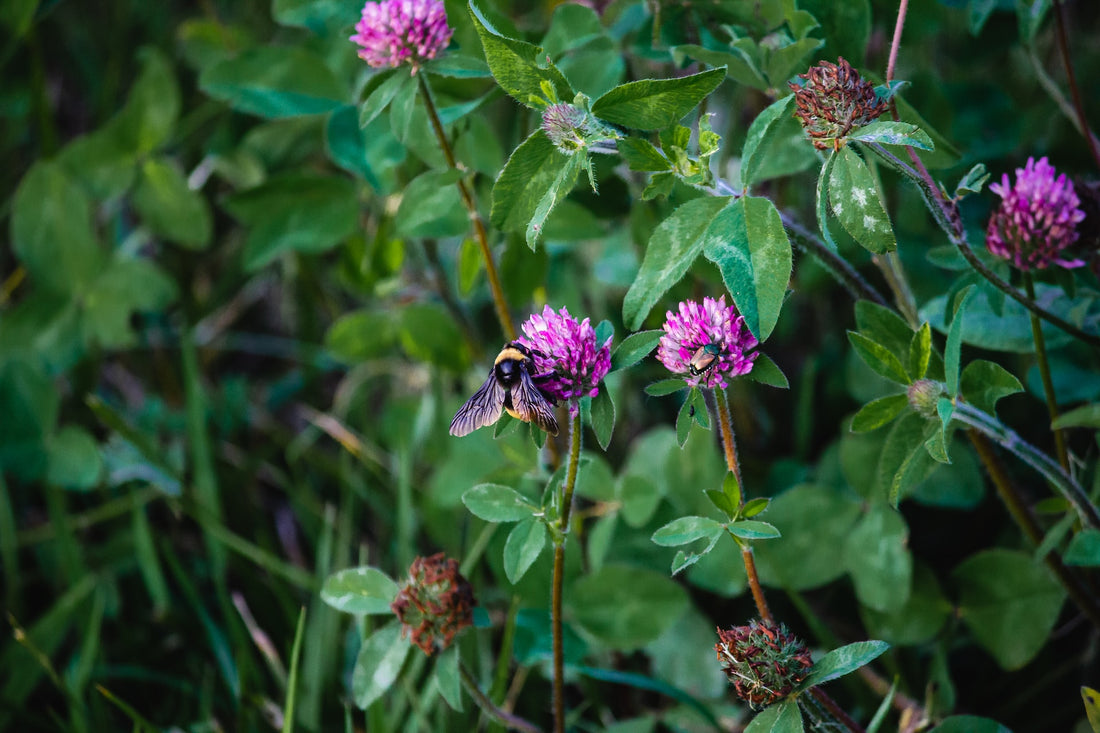What Are Cover Crops?
Cover crops are a type of "green manure" or living mulch that add nutrients and organic material to the soil. The gardener plants a quick-growing crop densely, then cuts them down or turns them back into the soil before they go to seed.
Cover crops not only add nutrients and organic matter to the soil. They also act as weed prevention, reduce erosion, and help the soil retain moisture.
Examples of cover crops include clover, vetch, beans, peas, oats, red clover, buckwheat, ryegrass, and rapeseed.
4 Benefits of Cover Crops
- Add organic matter and nutrients to the soil.
- Reduce erosion by preventing soil from blowing or washing away. Bare landscapes, like vegetable gardens, are prone to erosion because they are an artificial creation without year-round plants to keep the soil fixed.
- Improve habitat for earthworms and other beneficial organisms
- Prevent compaction of the soil (compacted soil doesn't grow vegetables well).
When Is The Best Time To Plant Cover Crops?
Most people plant cover crops at the end of the season, so they can have time to grow a bit before the season ends. The best time for you will depend on where you live, though. Across North America, seasons and regions vary quite a bit.
The general rule is to plant directly after you've done your last harvest. To be beneficial, the crops must grow for at least four weeks before the first fall frost. This is so they can establish their roots.
How Do I Plant Cover Crops?
- Plant at the end of the harvest season, so the plants will have at least four weeks of growth before the first frosts come.
- Leave the crops in the garden all winter.
- In spring, cut, pull, or till in the cover crops. If you're pulling or cutting, be sure to leave the plants right there in the garden to decompose. They break down quickly, which is one reason why certain types are popular.
- Work the plant material into the soil as best as possible, either with a garden rake or hoe. If the foliage is left to sit in the sun, it will lose carbon and nitrogen, which you want to be in the soil.
- Leave the garden alone for 2-3 weeks, so the plant material has enough time to break down.
- Do not plant anything in the garden for those 2-3 weeks. This ensures your new plants can reap the benefits of the decomposing cover crops.
Which Cover Crop Should I Use?
The cover crop type depends on your end goal and where you live. Oats and barley are excellent for aerating the soil and reducing compaction. Clover and other legumes are nitrogen-fixers, adding tons of the essential nutrients into your soil as it breaks down. If you want both these benefits, plant some of each type.
Oats, clover, oilseed radish, and field peas are among the best choices for small home gardens. They are annuals, so they'll naturally die off in one season, and they are easy to incorporate into the garden in spring. Some cover crops, like red clover and hairy vetch, aren't well suited for home gardens because they are slow growers or take a lot of effort to work back into the soil.
This chart from www.Almanac.com is excellent for determining which cover crop is best suited for your region.



